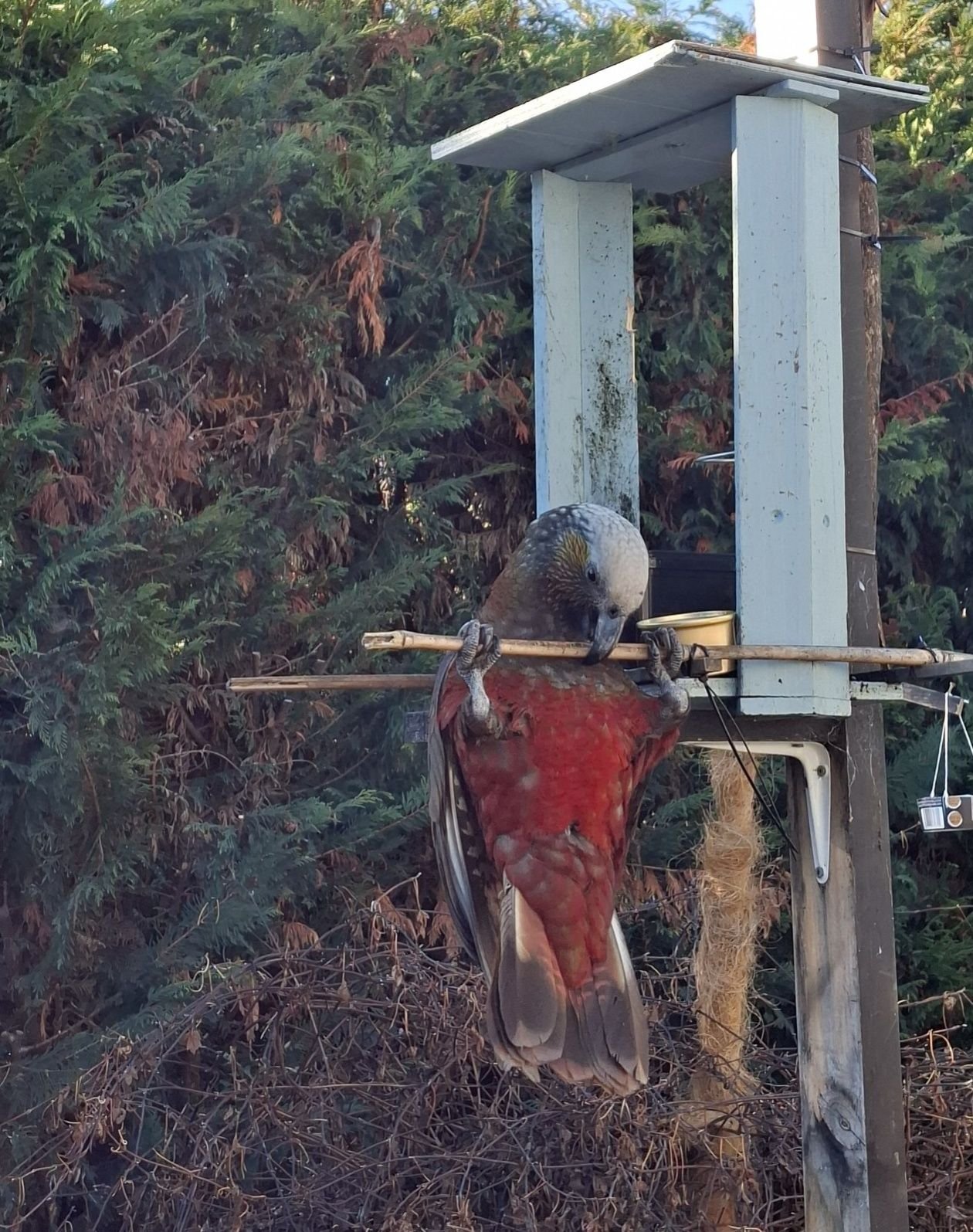
Milton and Queenstown may seem not to have much in common but both towns have claimed kākā sightings in the past few weeks.
Milton locals are excited to see kākā in the area while one kākā appears to have made the Queenstown district its permanent home.
Kākā were recently spotted in South Otago between Pounawea and nearby namesake beach hamlet Kākā Pt, with another rumoured to be around Kaitangata.
Milton artist Sara Gillies snapped photos of the 30cm bird in her backyard on Tower Rd last week and said its most reliable patron was nearby retired shearing contractor, Jim Murdoch.
Mr Murdoch and his wife Ann planted a colourful, bushy garden with tall native trees when they began developing their property 34 years ago.
The plants’ presence encourages native birds and the couple first saw the kākā in July.
"Here he really likes it in the rhododendrons and in the magnolias. The closest I’ve been to him is about 2m, if he is a he," Mr Murdoch said.
The kākā had no identifying tags and Mr Murdoch was confident it was a different bird from those seen in Kaitangata and the Catlins.

"There has been a notable influx into lowland Southland and Otago this winter.
"The most likely sources for these birds are Fiordland and West Coast sites ... where recovering populations are having a spillover effect thanks to decades of pest predator control," Mr Jaques said.
In Queenstown, the kākā had been sighted in Frankton, Arrowtown, Sawpit Gully and Lake Hayes Estate, over the past few months.
Whakatipu Wildlife Trust executive Anna Harding-Shaw said the kākā likely came from Mount Aspiring National Park and had done some reconnaissance to the area to know where its food sources were, noting it liked to hang out in pear trees.
What makes it "really cool", she said, was that the kākā had returned naturally.
She was also hoping that having the bird adopt the resort town would encourage more residents to get involved in backyard trapping to help keep it, and other natives, safe.
The trust’s just received $3000 from the Predator Free NZ Trust, with an option to expand that to $5000, depending on uptake, to purchase more traps and gear for backyard trappers.
The focus of the trapping would be around the Lake Hayes Estate.












